Key Takeaways
- Flies vary in size, color, and wing structure by species.
- They’re attracted to food, waste, and moisture-rich areas.
- Prevent infestations by sealing entry points and using repellents.
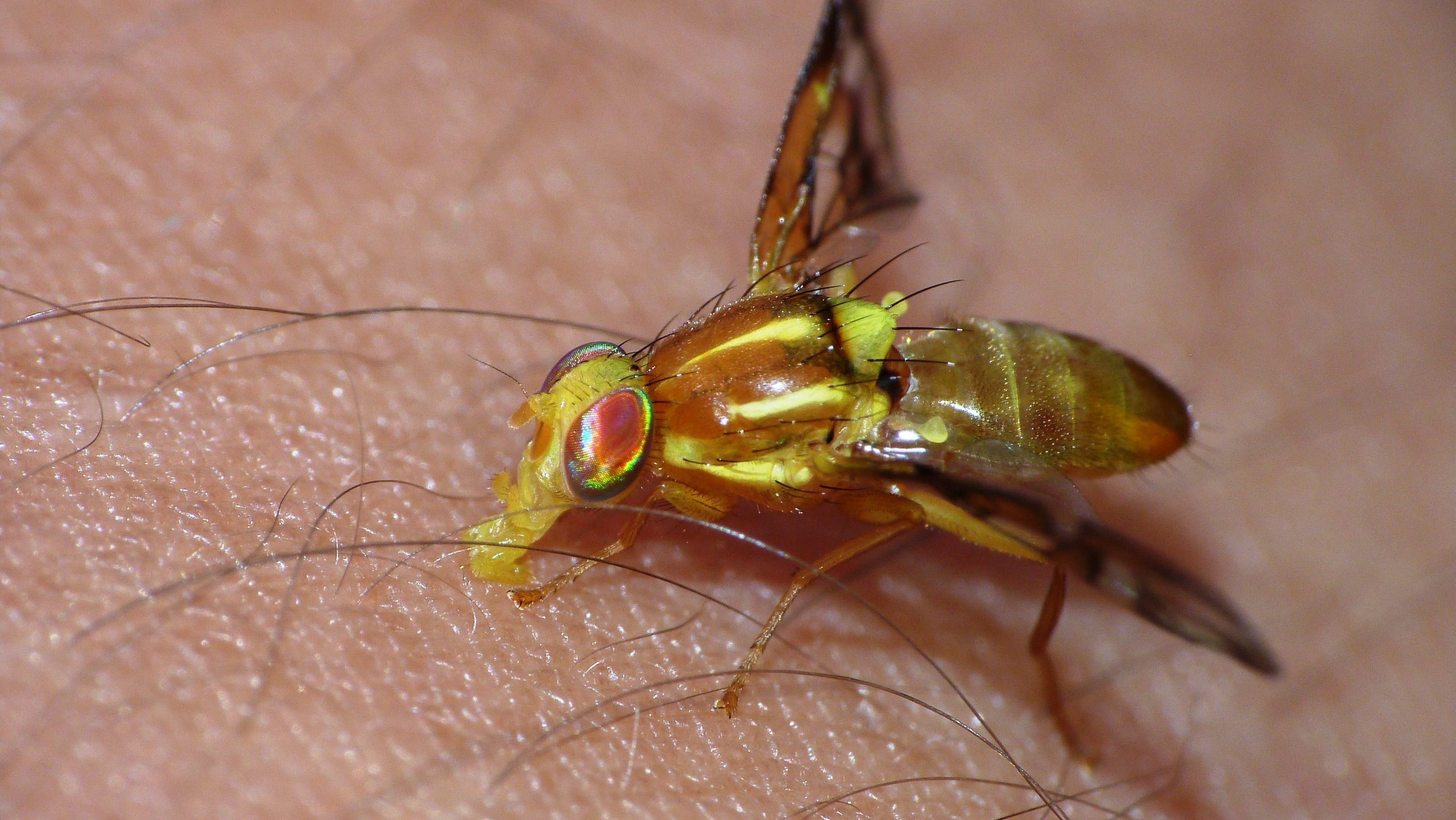 Flies are among the most common insects in homes and outdoor environments. While some are harmless, others are known for spreading diseases and being a nuisance. Identifying the type of fly you’re dealing with is crucial for effective control as they can be harmful.
In this article, we’ll talk about the appearance, types, and behaviors of flies, helping you recognize common species like house flies, fruit flies, and horse flies.
Flies are among the most common insects in homes and outdoor environments. While some are harmless, others are known for spreading diseases and being a nuisance. Identifying the type of fly you’re dealing with is crucial for effective control as they can be harmful.
In this article, we’ll talk about the appearance, types, and behaviors of flies, helping you recognize common species like house flies, fruit flies, and horse flies.
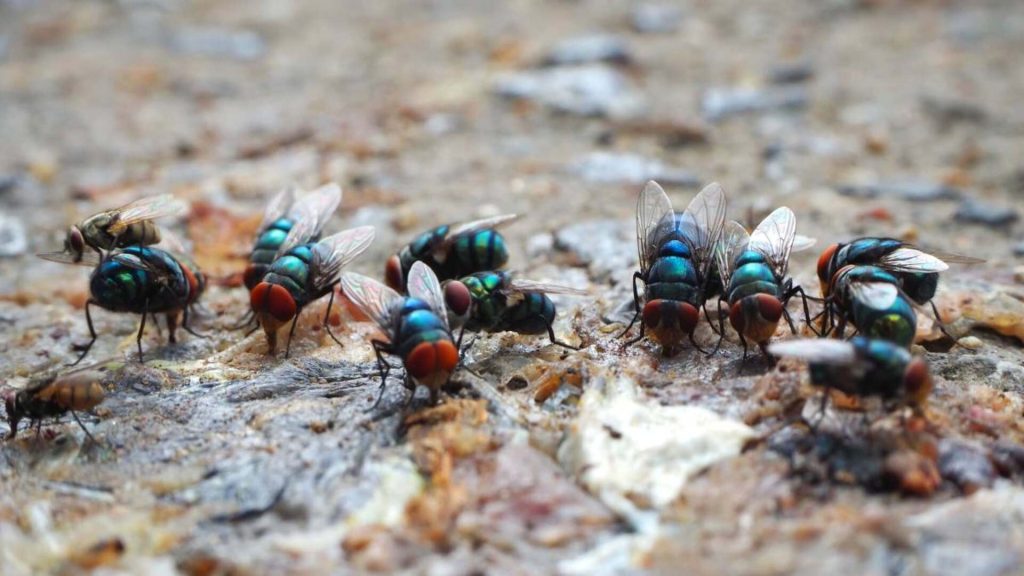

Not getting a solution?
Get your free pest control estimate today!What Do Flies Look Like?
Flies are small insects belonging to the order Diptera. They have a pair of wings, which distinguishes them from most other insects. Adult flies typically have a small, oval-shaped body and large compound eyes that provide them with a wide field of vision. The mouthparts of a fly are designed for sucking or lapping up liquids rather than chewing.Physical Characteristics of Flies
-
Size: Ranges from 1/16 inch (fruit flies) to over 1 inch (horse flies).
-
Color: Typically black, brown, or gray, but some species have metallic green, blue, or bronze hues.
-
Body Shape: Flies have oval or elongated bodies with tiny bristles (hairs) on their bodies.
-
Legs and Wings: Six legs and a pair of functional wings enable flies to move quickly and fly with precision.
Types of Flies and Their Appearance
Not all flies look or behave the same. Different fly species have distinct physical features, colors, and habitats. Here’s a closer look at the most common types of flies.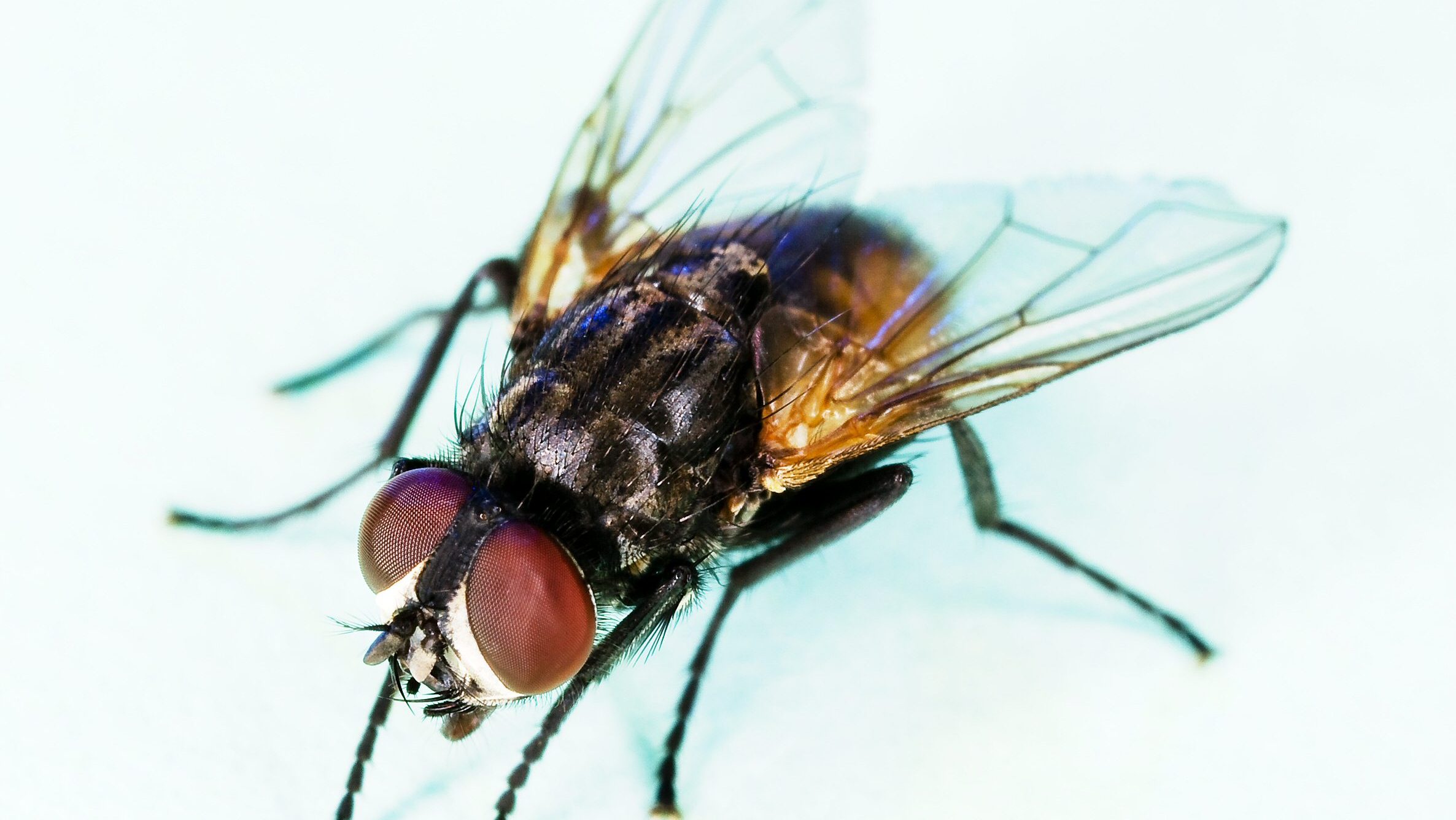
House Flies: Physical Characteristics
- House flies are the most familiar indoor species. They are attracted to food, garbage, and organic waste.
-
Size: About 1/4 inch long.
-
Color: Gray with black stripes on the thorax.
-
Key Features: Red compound eyes, transparent wings, and short bristly hair on their body.
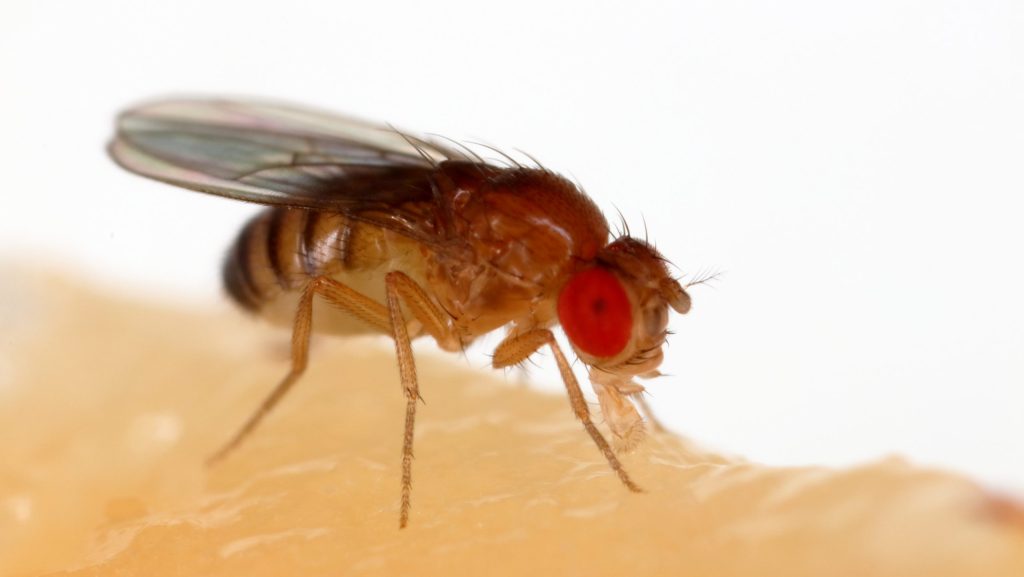
Fruit Flies: Physical Characteristics
- Fruit flies are tiny insects often found around fruits and fermenting liquids.
-
Size: About 1/8 inch long.
-
Color: Yellowish-brown body with red or black eyes.
-
Key Features: Small, delicate bodies with large, rounded eyes.
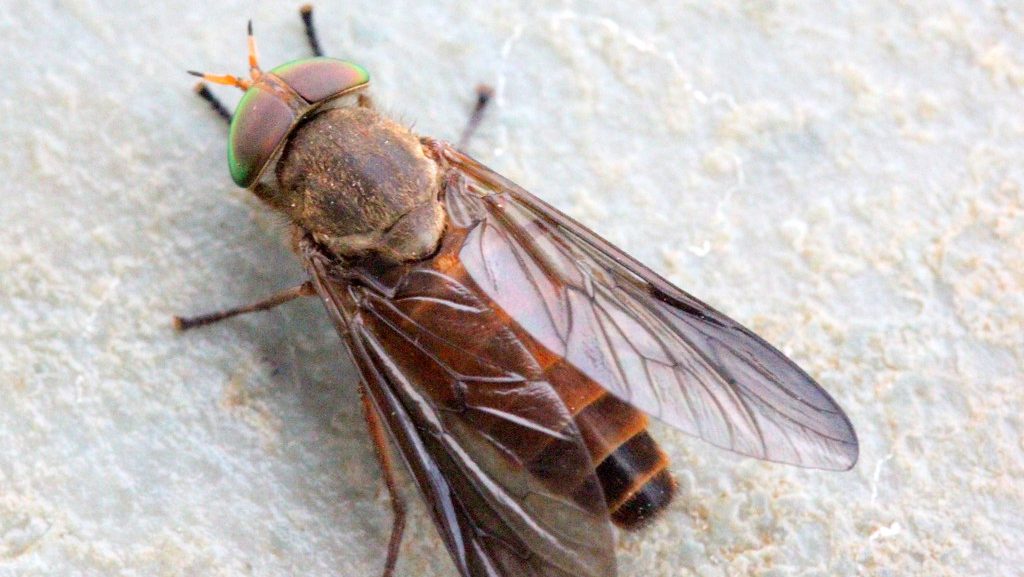
Horse Flies: Physical Characteristics
- Horse flies are much larger than house flies and are known for their painful bites.
-
Size: Up to 1 inch in length.
-
Color: Black or dark brown, sometimes with green or golden eyes.
-
Key Features: Large, noisy, and equipped with sharp mouthparts for biting.

Drain Flies: Physical Characteristics
- Drain flies, or moth flies, are small flies often found near sinks and drains.
-
Size: About 1/8 inch.
-
Color: Light gray to black.
-
Key Features: Fuzzy or hairy appearance with moth-like wings.

Cluster Flies: Physical Characteristics
- Cluster flies gather in large groups around windows and warm areas.
-
Size: Slightly larger than house flies.
-
Color: Dark gray with golden hairs on the thorax.
-
Key Features: Sluggish movement, large numbers around windows, and a tendency to cluster.
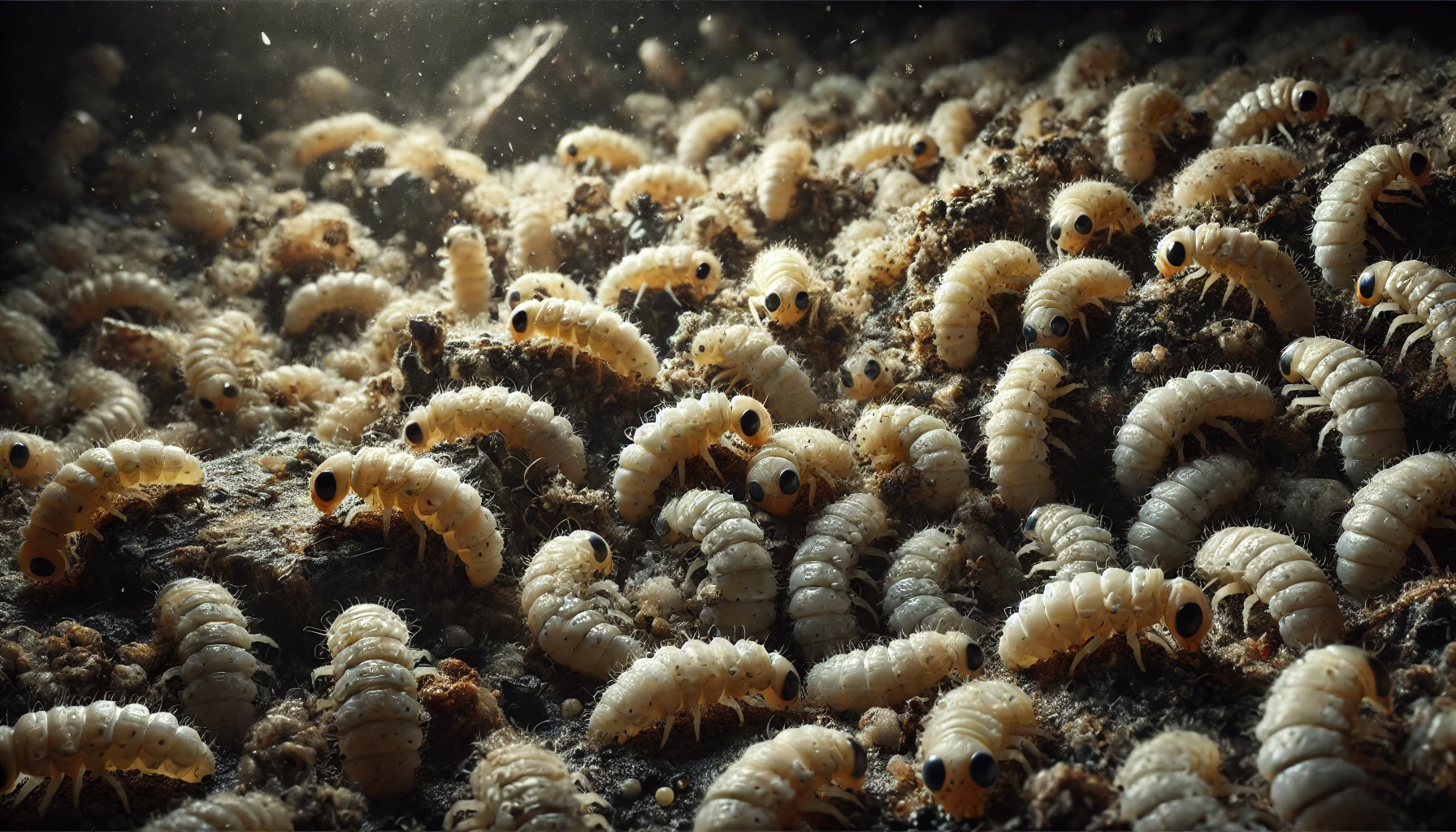
What Do Baby Flies Look Like?
Baby flies, or larvae, are commonly known as maggots. Maggots are legless, soft-bodied larvae that are typically white or cream-colored. They have a cylindrical shape and a pointed head, which they use to burrow into their food source. Maggots do not resemble adult flies at all and are often found in decaying organic matter.Physical Characteristics
-
Size: Around 4-12 mm long.
-
Color: White or cream-colored with a tapered, cylindrical shape.
-
Movement: Maggots move by wriggling and can often be found in decaying food, animal waste, and garbage.
How Big Are Flies?
Different sizes of flies may be present in your home, and this may be helpful to identify the species. Fruit flies and drain flies measure 1/16 to 1/8 inch, and they are often near fruit, drains, or standing water. Medium-sized flies such as house flies and flesh flies range from 1/4 to 1/2 inch and are seen around food, trash, and decaying matter. These are up to 1 inch in size and painful in their bites, found in fields or stables. The large species are horseflies and deer flies.
What Color Are Flies?
Flies come in a range of colors, with their appearance varying by species and environment. Common colors include black, brown, gray, and tan, which are typical of house flies and fruit flies. Metallic-colored flies like blow flies and bottle flies stand out with their shiny green, blue, or bronze hues, often seen around decaying food or animal carcasses. Some flies also have distinct patterns on their bodies, like house flies with black stripes on their thorax. The color and pattern of a fly can help identify its species and understand where it might be coming from.How to Identify Flies?
Identifying flies requires observation of their behavior, appearance, and where they’re found.Here’s how to do it:
-
Use a Magnifying Glass: To spot smaller features like eye color, wing patterns, and body hairs.
-
Watch Their Behavior: Take note of their flight pattern, preferred landing areas, and feeding habits.
-
Note Their Size and Color: Identify if the fly is large or small and check for metallic colors or stripes.
-
Check Common Hiding Spots: Flies, such as house and fruit flies, are most often found around food, while drain flies are found near sinks.
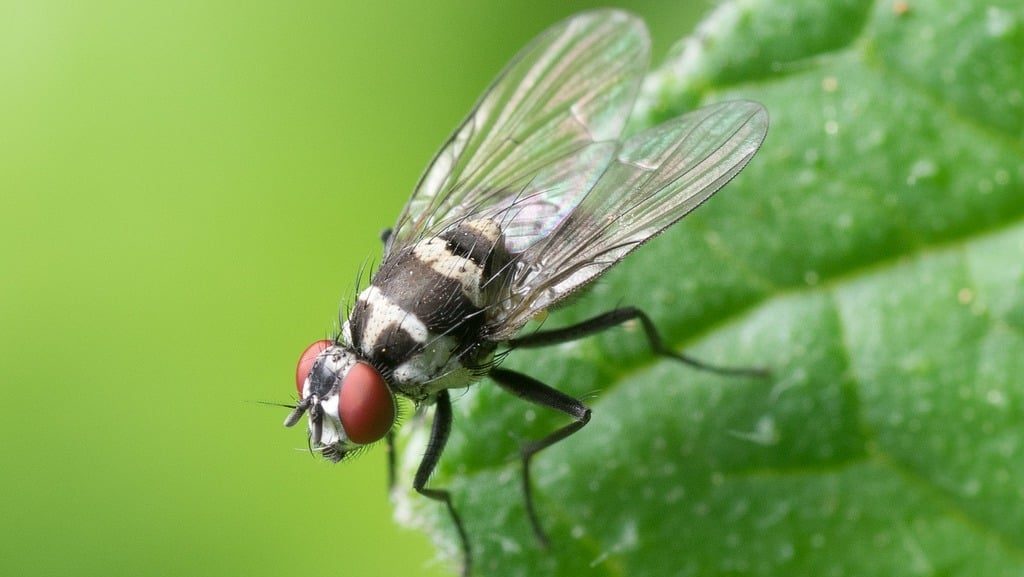
How to Prevent Flies From Entering Your Home?
Flies are more than a nuisance as they can contaminate food and spread disease. Preventing flies from entering your home is far easier than dealing with an infestation. By taking a few proactive measures, you can keep flies out of your living spaces for good. Here are some simple yet effective prevention tips:Prevention Tips
-
Keep doors and windows sealed with screens or weather stripping to block fly entry points.
-
Dispose of trash regularly and keep garbage cans tightly sealed to avoid attracting flies.
-
Clean up food spills immediately to eliminate potential food sources for flies.
-
Store ripe fruits and vegetables in refrigerators or sealed containers to avoid fruit fly infestations.
-
Fix leaky pipes and drains to prevent standing water, which attracts drain flies.
-
To deter flies, use essential oil repellents like lavender, peppermint, or eucalyptus near doors and windows.
-
Install fly traps or sticky strips in problem areas like kitchens and patios to catch and kill flies.
Myths and Facts about Flies
Flies are often misunderstood due to popular myths that misrepresent their behavior and role in ecosystems. Here are some of the most common myths about flies and the facts that debunk them:| Myth | Fact |
|---|---|
| Flies live only a few days. | Some flies can live up to a month, depending on the species and environmental conditions. |
| All flies are harmful. | Not all flies are harmful; some play essential roles in pollination and waste decomposition. |
| Flies can only lay eggs on decaying matter. | Flies can lay eggs on various surfaces, including fresh food and living tissues. |
| Killing one fly will eliminate the problem. | One fly can lay hundreds of eggs, so it’s crucial to address the source of the infestation. |
| Flies do not have any benefits. | Flies are vital to ecosystems as pollinators and as a food source for other animals. |





